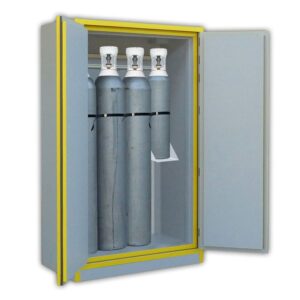Selecting the appropriate safety cabinet is vital for ensuring the safe storage and handling of hazardous materials in industrial settings. With various options available on the market, it’s essential to consider factors such as material compatibility, storage capacity, and regulatory requirements to make an informed decision. In this article, we explore the key considerations for choosing the right safety cabinet for your specific needs.
Understanding Material Compatibility
Different hazardous materials require specific storage conditions to prevent reactions or chemical interactions that could lead to accidents or contamination. When selecting a safety cabinet, it’s crucial to consider the material compatibility of the cabinet’s construction materials and interior coatings with the substances being stored. For example, corrosive chemicals may require cabinets with polyethylene or epoxy-coated interiors to prevent damage and ensure containment.
Evaluating Storage Capacity and Configuration
Safety cabinets come in various sizes and configurations to accommodate different quantities and types of hazardous materials. Assessing your storage needs is essential for determining the appropriate cabinet size and layout for your facility. Consider factors such as the volume of materials to be stored, available floor space, and accessibility requirements when selecting a cabinet. Additionally, some cabinets feature adjustable shelving or compartments to maximize storage efficiency and organization.
Ensuring Regulatory Compliance
Compliance with regulatory standards is a critical consideration when choosing a safety cabinet for hazardous material storage. Familiarize yourself with relevant regulations and safety guidelines applicable to your industry, such as OSHA (Occupational Safety and Health Administration) and NFPA (National Fire Protection Association) standards. Select a cabinet that meets or exceeds these requirements, including specifications for construction materials, labeling, and ventilation.
Assessing Additional Features and Accessories
Beyond basic storage capabilities, safety cabinets may offer additional features and accessories to enhance safety and convenience. Consider factors such as locking mechanisms for security, spill containment trays for easy cleanup, and built-in ventilation systems for air circulation. Evaluate these features based on your specific needs and budget to ensure optimal functionality and usability of the cabinet.
Conclusion
Choosing the right safety cabinet is essential for maintaining a safe and compliant environment in industries handling hazardous materials. By considering factors such as material compatibility, storage capacity, regulatory compliance, and additional features, businesses can select a cabinet that meets their specific needs and enhances safety protocols. Investing in quality safety cabinets not only protects workers and the environment but also contributes to efficient and organized hazardous material management practices.


